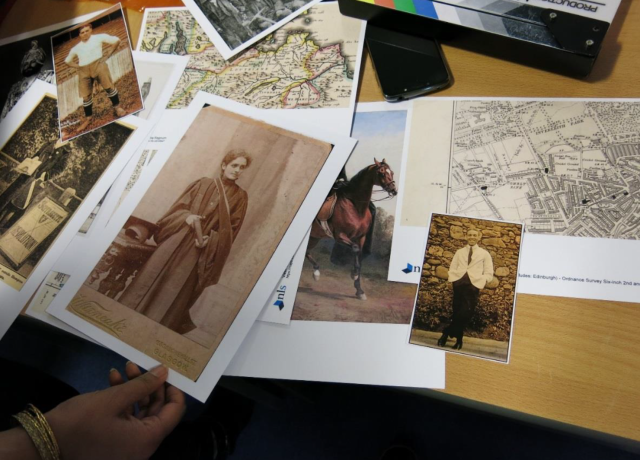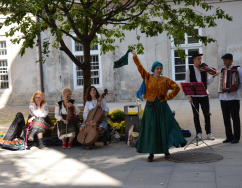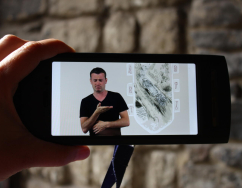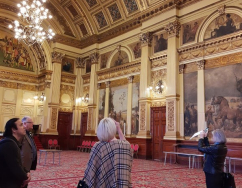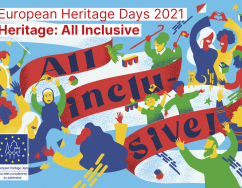Sharing Stories: findings from the study on increasing minority ethnic participation in European Heritage Days
Sharing Stories: findings from the study on increasing minority ethnic participation in European Heritage Days
The Sharing Stories study was developed in partnership with community groups to better understand the barriers preventing more diverse participation in European Heritage Days, and aimed to find ways to enable a more inclusive approach. The international project was led by Doors Open Days in Scotland and Heritage Open Days in England, with support from events in North Macedonia.
Survey questions and findings
A survey asked respondents how much they agreed or disagreed with statements such as: “in my local area there are opportunities to learn about the culture of my own community by visiting heritage sites”, “local heritage sites are relevant to me”, and “I feel welcome at local heritage sites”. A broad range of groups were encouraged to take the survey, so that answers could be compared, with 24% of respondents in the UK countries being of Asian or British Asian ethnicities and 8% from African or British African heritage. Although overall respondent numbers were low, the researchers found that those from ethnic minority backgrounds have more negative or neutral experiences at local heritage sites, with a smaller proportion feeling they are represented, either through the stories being told or by visitor demographics. Respondent feedback included the feeling that there is “generally [a] lack of representation in the mainstream”.
Activities and results
In Scotland, a hands-on workshop for young people from ethnic minority backgrounds explored oral histories, resulting in a video discussing what heritage means to them, while a focus group in Edinburgh with the LGBT Health and Wellbeing’s QTIPOC (Queer Transgender Intersex People of Colour) group led to plans for a community map to highlight places where members of the group feel they can embrace all parts of their identity. In Glasgow, a meeting in the Pollokshields area fed into a banner-making workshop. The banners were then carried to a women’s poetry event designed to encourage dialogue between people of all cultures, faiths and backgrounds.
National coordinators in North Macedonia worked in partnership with Slovenian organisers. A special exhibition of posters presented the heritage of ethnic communities living alongside each other in North Macedonia, and there was also a series of talks at Museum of North Macedonia on the heritage and traditions of the Slovenian community.
In England, relationships with a cross-section of underrepresented groups were forged through the outreach and community team at Nuffield Southampton Theatres. Here, the study revolved around the concepts of ‘journeys’ and ‘home’ and discussions looked at perceived ownership of both intangible cultural heritage and the built environment.
Lessons learned
Create partnerships: working with gatekeeper organisations is an excellent way to reach new audiences. To ensure meaningful engagement, ensure that activities and events are co-designed and co-delivered; the flexibility of this study allowed participants to shape workshops and discussions into activities impactful for them, rather than defining what would happen from the start.
Use relatable language: translations are important, but this study also found that specific terminology could be the difference between creating a barrier or being relatable. For example, during this project, the researchers found that talking about ‘spaces, places, and stories’ was a more explanatory phrase for participants than the word ‘heritage’. Read more about planning for inclusive language in our article: Connecting Through Language.
Images are important: using mixed media is a richer source of information than words alone. While this was true during research collection, this is also the case for events, where film and photography can help provide more immersive experiences which can provide a deeper understanding of diverse cultural heritage.
Event types: based on the experiences of this study, researchers made some suggestions for events which might prove popular, including sharing and taking photos and community mapping. Another is ‘bring and share’ events where participants can showcase artefacts, traditions or activities which reflect their culture, such as ‘bring 3 steps’ dance workshops.
Get planning soon: developing new relationships and events takes time, planning and resources, with timelines proving critical to delivering this study. Organisers should start thinking about how to incorporate Heritage: All Inclusive in their programmes as soon as possible.
Inspired to reach out to new audiences and partners? Discover more inclusive case studies in our 2021 All Inclusive Brochure, while our Inclusive Events Toolkit has useful tips and ideas for putting this year’s theme into practice.
